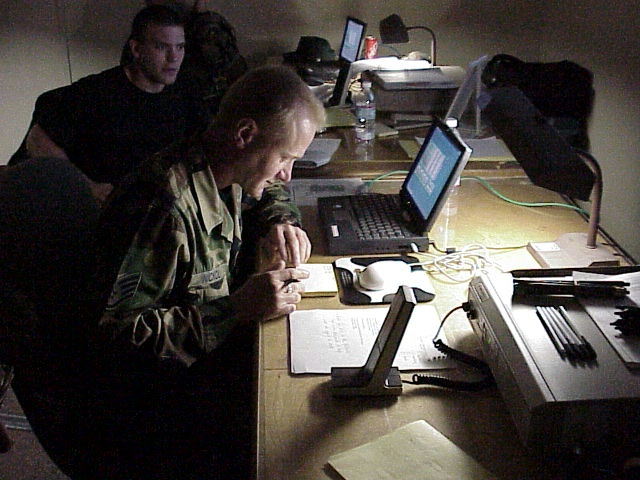

![]()
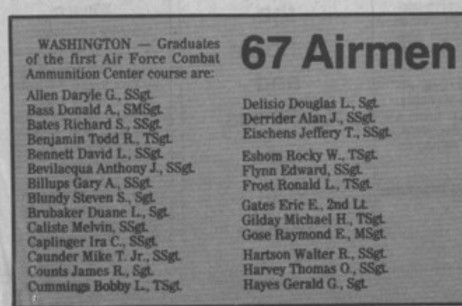

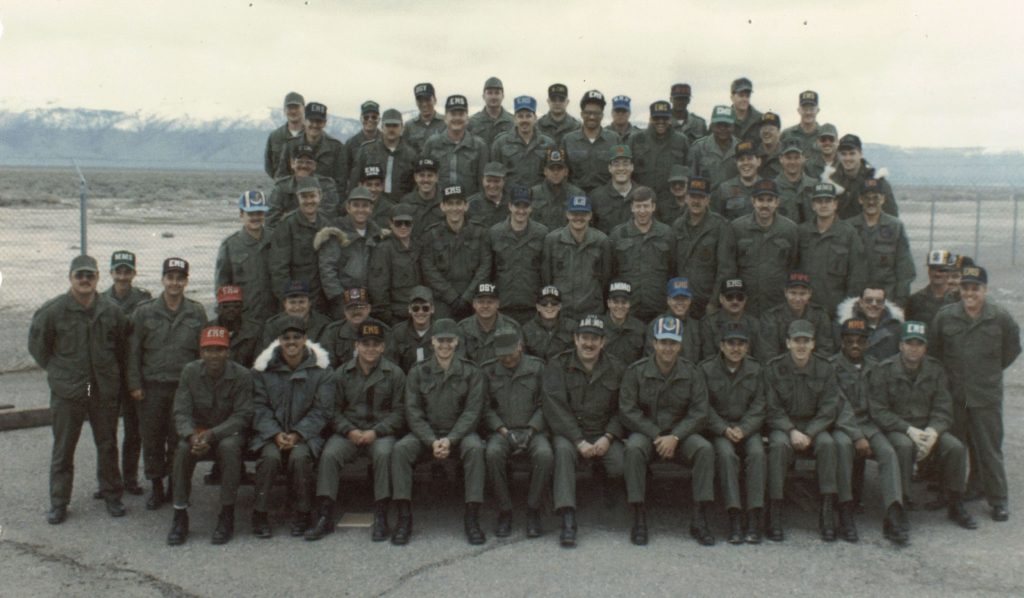
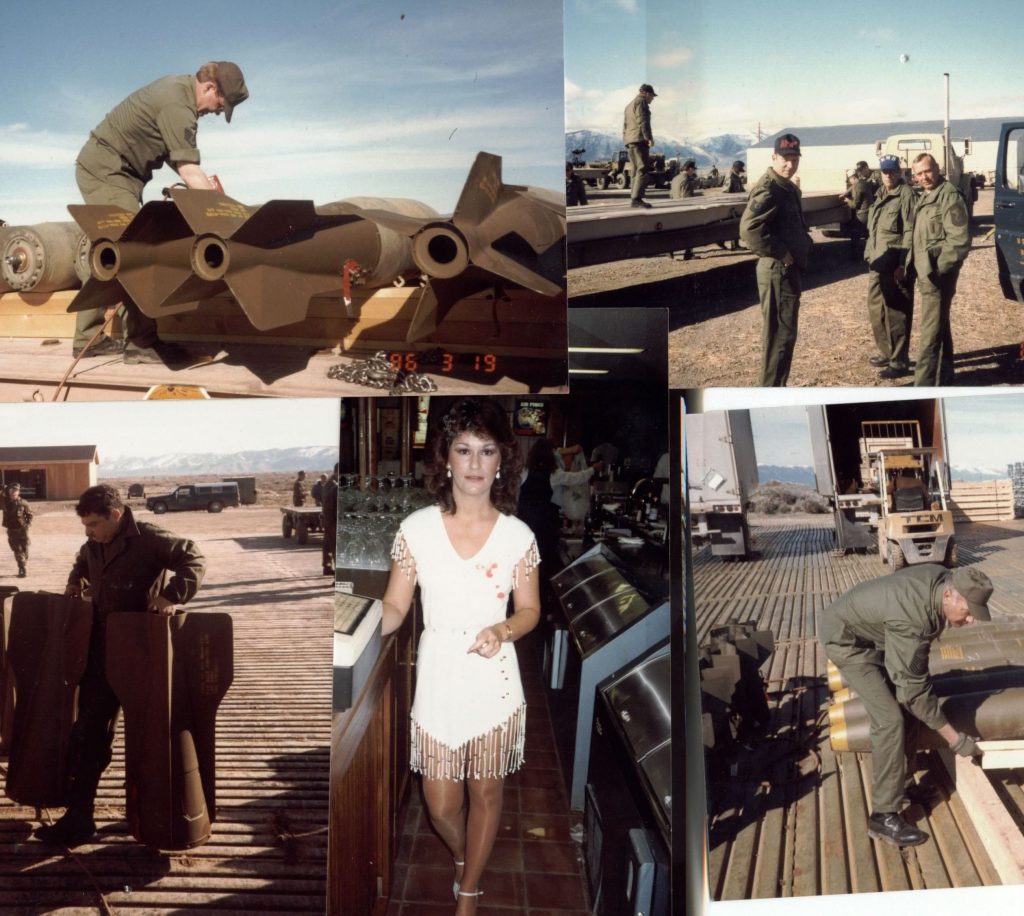
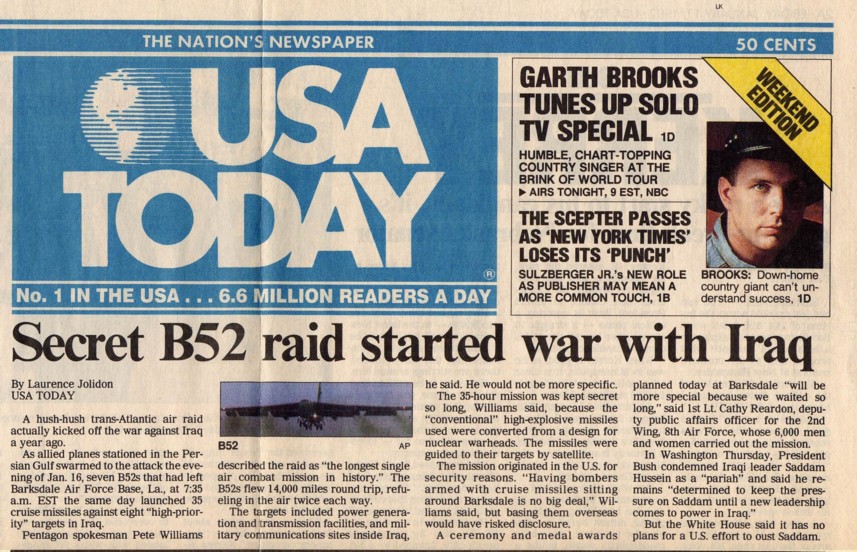

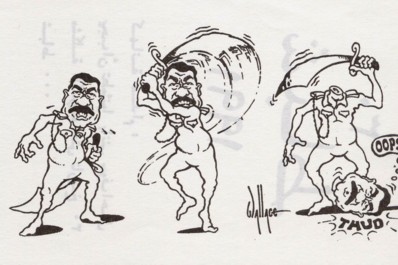
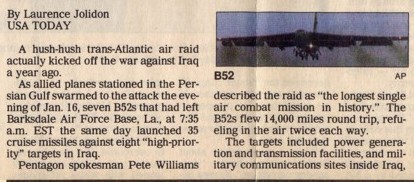

In Viet Nam Ammo answered the call with everything from 7.62 ammo and 2.75 inch Rockets to the 15,000 pound bomb. Ammo makes the mission.

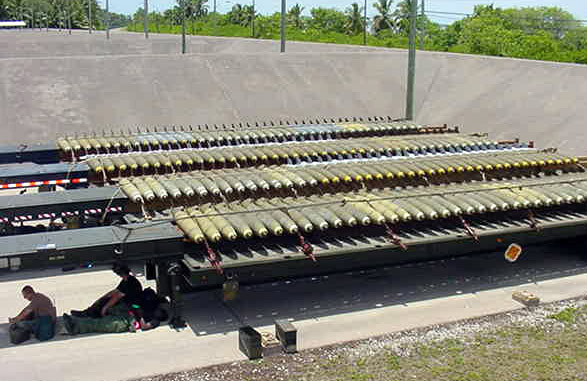
A 40-foot trailer of MK-82 bombs sits ready for delivery to B-1 Lancer and B-52 Stratofortress aircraft. Munitions experts from Mountain Home Air Force Base, Idaho; Ellsworth AFB, S.D.; and Barksdale AFB, La., established the largest munitions operation in support of Operation Enduring Freedom. (Photo by Staff Sgt. James Sult)
Thanks Red Hess:
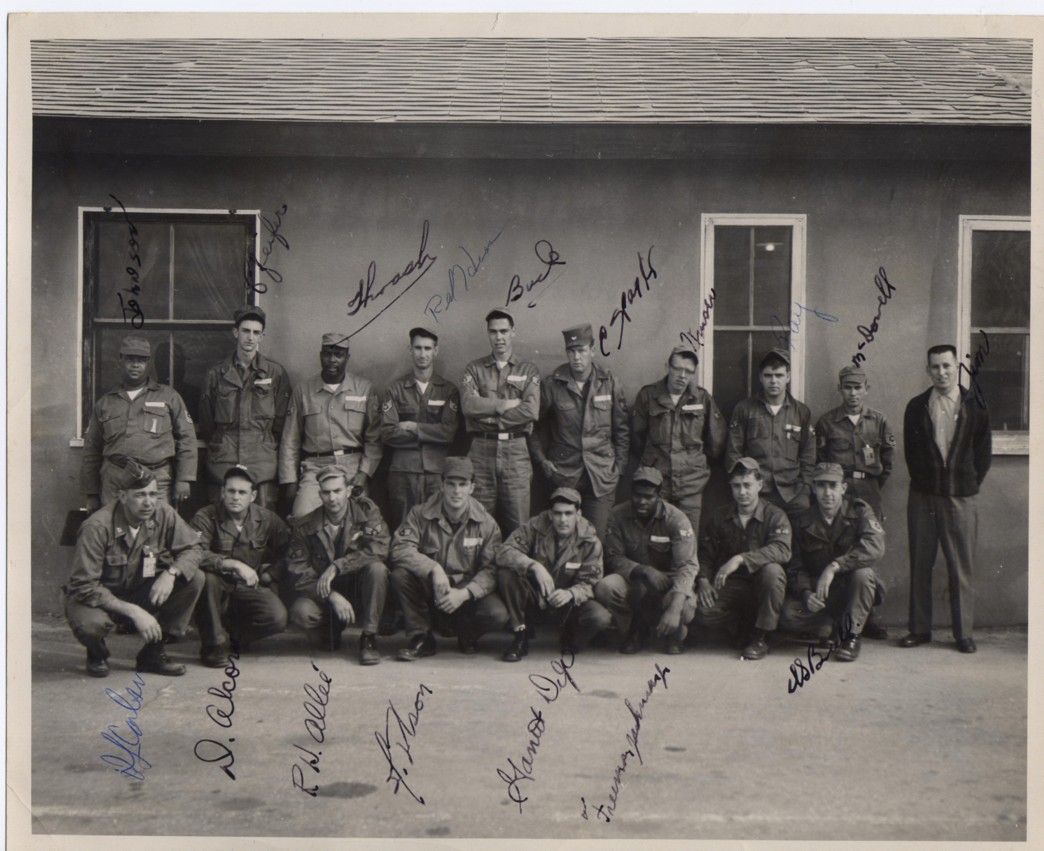

Joe Wata’s Recollections:
When I first became involved with the munitions career field, I soon found out that it was one of heavy lifting, pinched fingers and sore toes. At Kelly AFB, because there wasn’t an ammo dump, our Commander made arrangements with Ft Sam Huston for us (the 3rd Ammo) to work at Camp Stanley Arsenal and be quartered at Camp Bullis about 20 miles north of San Antonio. Bullis had not seen humans since 45 and it was a plywood camp. All the buildings except for the Headquarters were constructed from plywood. We took over the Officers area and had two man huts that resembled bell tents. The work at the arsenal consisted of demilitarizing munitions, renovating practice bombs and reworking artillery munitions. I think Stanley had the entire stock of 100 lb blueboy practice bombs in the AF inventory. No matter what, being away from Kelly and the crap details was a godsend.
From Kelly I went to Alaska via Smokey Hill AFB, Salina, KA. At Smokey, the Ammo Dump was located on the road that went to the Family Housing area. Although we had a train track than came on base, whenever a shipment of munitions came in, we had to go into town to pick it up. On one occasion, we picked up a load of 100 lb GPs, and on leaving the railhead with the bombs secure on an M5 trailer we ran into a bit of a problem halfway through town. The brackets that were holding the bombs came loose and of course the bombs were strewn over the road.. Fortunately, there wasnt too much vehicular traffic in those days. The equipment that was used in the bomb dump in those days, consisted of a 1 ½ ton BST with a hand crank hoist on a fixed boom, a 2 ½ BST (Bomb Service Truck) with a fixed boom and a hoist that was controlled from the truck engine. A TD9 Cat with a boom that could rotate 360 degrees and of course a large collection of idiot bars. These last items consisted of a length of heavy pipe with a hook located in the center. 4 guys could shift a 500 lb bomb with no problem. Eventually, 100 pounders were a piece of cake. Ammo boxes were back breakers..these were from WWII and made to last. Some had rope handles, or just a few pieces of wood tacked on the side so that you could get a finger hold. They averaged in weight a little over 100 lbs. Moving this stuff was at times a nightmare. If you couldnt get roller conveyer belts, you had to hump it. If you had to open it, you quickly found out that underneath the lid that was held down by either wing nuts or just plain nuts was a metal container with a soldered lid. This lid had a small handle on it, just like a sardine can. Break the handle and you needed a large screwdriver and hammer to get at the ammo.
At Eielson, we had a large quantity of WWII ammo and one BST. I dont think that whoever designed the initial BD at Eielson had ever thought of QD and compatibility. I was a pissy Cpl and in charge of this mess and hadnt the faintest idea about what should go with what. My first summer there turned out to be fun. The ammo inspector at Ladd (Sam Harris) came over and he condemned about a third of the bombs that I had for either bent lugs, exuding fuse wells and just plain crap. For about a month, the base shook with our daily explosions as we got rid of the stuff. At the end of the job, Sam asked me if I had initiated the ADRs. Whats an ADR was my reply. He and I spent a good week writing these up and declaring them emergencies so that the Base Commander could sign them off and get them off record. I learnt two valuable lessons during this, one was make sure you have the paperwork and two disconnect the parachutes from parafrag bombs ( not going to go into that..too damn embarrassing). Sam would later on transfer to Ogden AMA and become a big wig in the system. Eielson more or less was my training ground in the field of munitions. It was here that I learnt about QD, munitions compatibility, supply records and funny words like demurrage. The last got my butt into hot water. I received a shipment of 1 million rounds of 50 cal in 5 boxcars and myself and my three man crew took our sweet time in offloading it. At 110 rds per box, there were a lot of boxes. Another embarrassing moment.
Eventually, the SCARWAF built a new bomb storage area near the POL tank farm and we moved most of the stuff from the base ammo area to the new area. But, before then, an incident in the Bomb Dump can quickly wake you up and show you what an explosive can do.
A crew from the Ammo Sq at Elmendorf was sent up to Eielson and to get it squared away. At the same time, we inherited a battalion of infantry and anti aircraft artillery (90MM) on the base and with them came all their munitions. On this particular day, a detail of infantry were working on what we called a mortar pile and us Air Force types were restacking VT fuses in one of the Quonset huts. A loud bang was heard and at first we thought that the mortar pile was going up. Working our way out to the drainage ditch outside of the Quonset, we noticed smoke coming from the middle of the bomb dump in an area where we stored our grade 3 stuff awaiting destruction. Seems that the infantry boys went over to see what was in the pile. One of them picked up a rifle grenade, pulled the pin and dropped it between his legs. Needless to say there was a mess. Six people were seriously injured that day, and all of them owe their lives to an AF TSG by the name of D, Cartwright. Cartwright new his first aid and instructed us on what had to be done.
From Eielson, I transferred to Eglin. I got there just in time to help out on Operation Backbreaker. We were filling 500 lb casings with sand, putting in 4 pounds of black powder at the base and taping a half pound block of comp c to the fuze well. When these were dropped, the comp C blew off the base plate and ignited the BP giving off a good smoke charge. I think I will always remember Eglin for its Sand House. Also at Eglin, I had the privilege of testing a piece of equipment that had the funny name of “Incendiary Oil Mixing and Transfer Unit”. I went back up to Alaska (Ladd AFB) and attempted to get this piece of equipment to work in the cold. Needless to say, left out in the cold, it would not work. Most people now call this item a “Napalm Mixing Machine”. The containers we loaded were known as E74 Fire Bombs. When I left Eglin for Korea, I met up with this item again.
In Korea, we had a few items that made our job a bit easier, Besides the TD9 cat, we had a Lorain Crane and an innovation that exceeded expectations. This was a Weapons Carrier that was modified with a makeshift crane on the front that was welded to the front bumper, that made use of the front winch. To keep the vehicle from toppling over when you picked up several 500 pounders, sandbags were placed in the back of the vehicle. Of course, the proverbial idiot bars were all over the place.
When hostilities ceased, we were immediately required to conform to pre-war conditions, i..e., compatibility, quantity distance, etc. It ended up that the bomb dump at K13 received a blanket waiver for everything. We were too close to villages and main roads.
For my sins in Korea, I was reassigned to the 42BW at Loring AFB, Maine. There wasnt a bomb dump when I got there, just a munitions area and a 39D warehouse. We were located to one side of the main runway and at times this created problems. Any B36 in trouble and slipping around the sky called for us to evacuate. Eventually, we moved into a brand new storage area that was located near to the 3080 ADW. Access to the flight line was good as it was a straight run from the munitions area to the aircraft parking area. We were mainly tasked with delivering and repositioning 20MM at the aircraft, removing brass, and loading whatever bomb they wanted to use. These bombs were mainly 100 lb blue boys. We loaded them by cradling the bomb in our arms and walking up the crew chiefs ladder to the bomb station. (Now and then, the ladder broke, but fortunately no one was seriously injured.) The smallest guy on the crew got behind the station and pulled the shackle in to position. I only used the saddle hoist once and that was to load 500 pounders in the rear BB. The repositioning and removal of the brass was one big pain. These big buggers took 9200 rds of 20MM. My stay at Loring was short lived. I had a friend in personnel and within seven months, I was on my way to England.
When I first arrived at Brize Norton, the bomb dump was brand new but missing a few things. The bomb revetments had concrete gantries and overhead railsthe only thing missing was the chain hauls.we had two M108 BSTs that could reach in to maneuver the bombs, but when they were delivered by British lorries, we had to revert to dunnage to make a ramp and roll the bombs off the back end of the trucks and then use the idiot bars to position them. The positioning was limited to the 250 lbs we had, we waited until the lorries got out of the way and used the M108s on anything heavier. England in the early and mid 50s was one big bomb dump for the USA. I delivered stuff from Brize to North Pickenham (the main supply dump at the time), RAF Tuddenham and a trip to RAF Wing. The ammo people at Wing lived in the local pubs. It was while stationed in England that SAC started the demise of the Bomb Dumps at their stations. I guess someone figured that there was no need for conventional munitions as we had the big neutralizer. Occasionally, they would equip a B47 with a high density kit and we would load 250 lb practice bombs for the crew to drop in the North Sea. Now, you talk about a Jerry rig, loading conventional bombs on a 47 was one. We would get a crew chiefs stand, position a couple of 250s on it, brace the bombbay doors open, push the stand into the bomb bay and then jack it up. The rest of the job was muscle power and a back breaker.
Fortunately for me, I only had to do this once. Midway through my tour, I got transferred to the local ADS, as did everyone in the Bomb Dump. My memories of the Brize dump were happy ones and at times really comical. The vice commander kept his horse in our area, the supply officer housed his dog there (until he got ran over by the 108) . The two guys we had on the night shift were always in trouble.from chasing the rabbits with the jeep to using the 108 to hoist a couple of girls over the fence. I left Brize right after SAC started Relexing and went to MacDill. The only conventional stuff there was the 20mm ammo and the JATO racks. Every thing else was geared for Nukes. The practice bombs were replaced with MB4s ( a junior version of a nuke with a spotting charge in it and loaded on the plane with a clamshell device). I wouldnt see another ammo area until I got reassigned to Otis AFB, Ma.
My stay at Bullis and Eglin proved to be the best. We were close nit, had hard working conditions; but, fair bosses. I looked at Bullis as the great jawbone escapade. After the middle of the month everything was on credit. Falstaff beer at 15 cents a bottle, movies and haircuts were also on credit. Once a month the service club would have a dance and bring the girls out from San Antonio in a 6×6. At Eglin we were a bit nomadic. When I reported in, we were housed in Transportation Sq barracks, then moved to Supply Squadron barracks near the crash boat docks (down in Skunk Hollow) (see note) and then finally made into a Supply Services Sqdn and housed in the old Operations Buildings near the base laundry. (Often wondered if those buildings are still standing). The snack bar we had in the ammo area, paid for a few beer busts and of course there was volley ball at dinner time. A few guys screwed up, like sleeping on a stack of munitions in the igloo and not being seen to the point that they were locked in overnight and only came up missing at roll call in the morning. Also, another bad part was being picked up by the Niceville police and incarcerated in their little jail at the junction of the Crestview road. Oddball jobs like, getting an empty 4000lb LC bomb, modifying it with a filler plug, and pumping several hundred gallons of napalm into it. This was used to simulate an air burst nuke during firepower demonstrations. Working on classified stuff, only to have the items wash ashore in Ft Walton. One thing about the bomb dump at Eglin, there was always something new and at times mind-boggling.
Note: The area around the Service Club and beach as well as the crash boat docks was originally referred to as Skunk Hollow..It was replaced with the term “Pleasant Valley” after complaints.
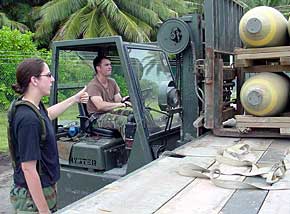

Crayon Commandos gone Cyber
